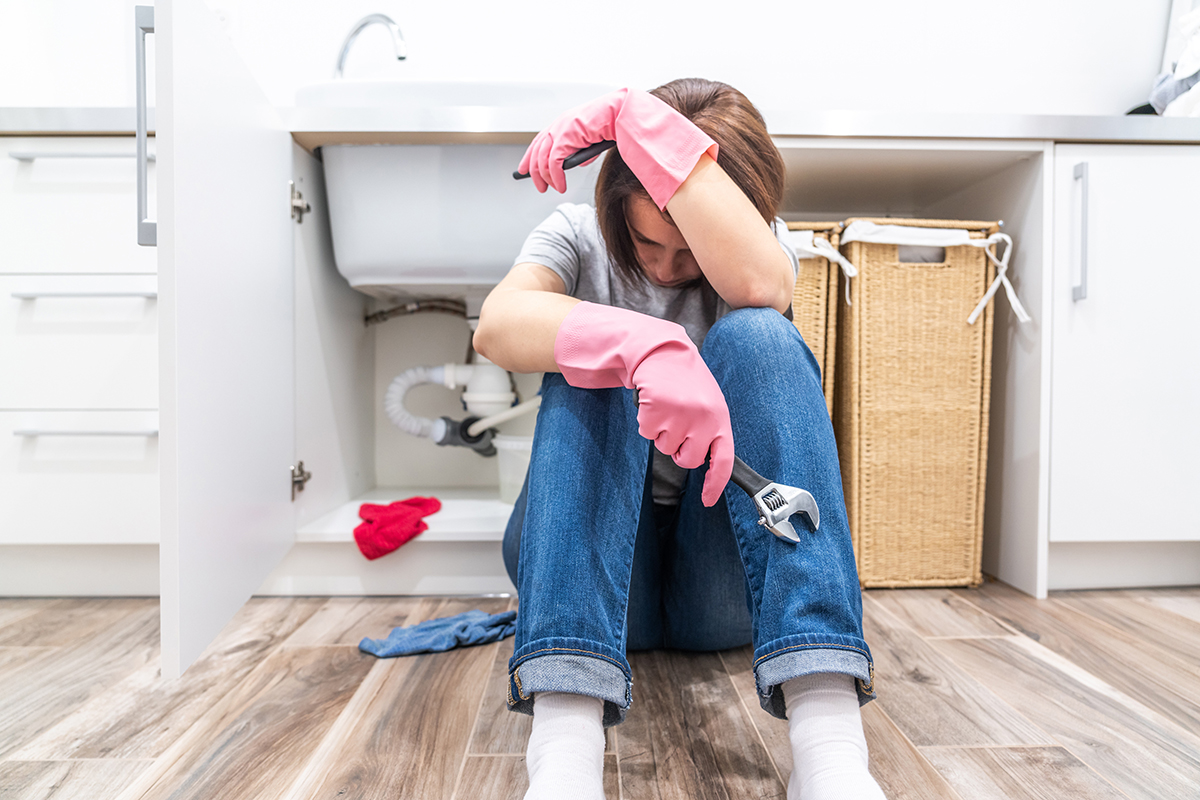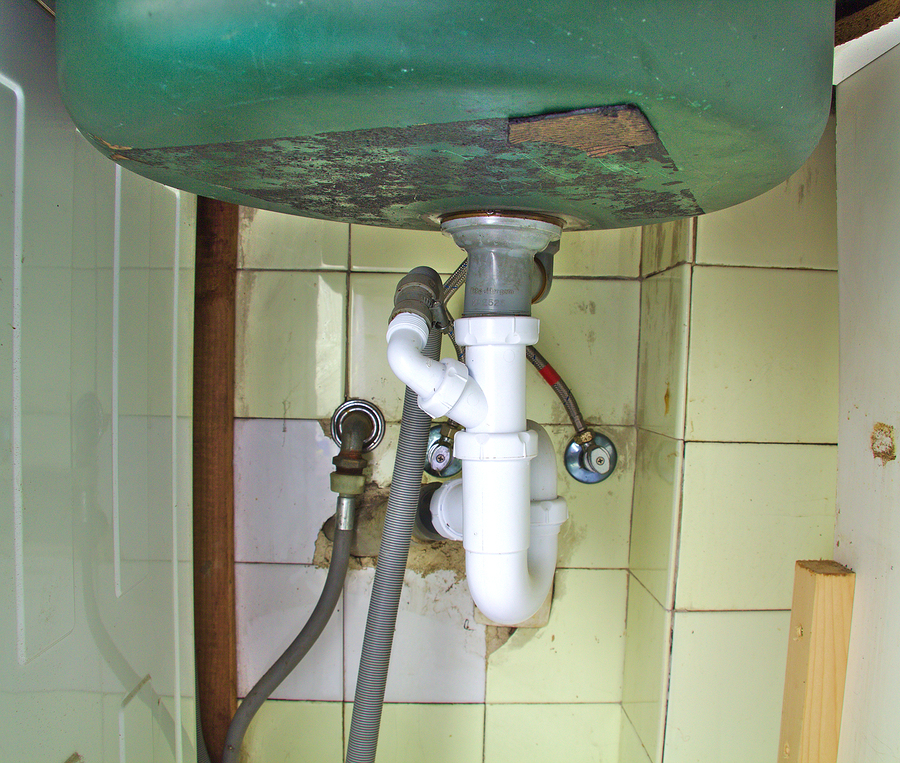Top Tips for Fixing a Leaking Waste Disposal Unit
Top Tips for Fixing a Leaking Waste Disposal Unit
Blog Article
We've stumbled on this article involving Why Is My Garbage Disposal Leaking From the Bottom? directly below on the net and figured it made perfect sense to write about it with you on this site.

Garbage disposals are crucial kitchen area devices that help in taking care of food waste effectively. However, a dripping garbage disposal can be an aggravating and untidy problem to manage. Thankfully, lots of leaks can be repaired quickly with a few easy steps. In this article, we will certainly review exactly how to repair a leaking garbage disposal properly.
Introduction
Garbage disposals are mounted under kitchen sinks and are made to shred food waste into smaller sized pieces, permitting it to pass through the plumbing system easily. While these tools are normally reliable, leakages can occur gradually due to deterioration, loose links, or damages to the device.
Typical Reasons For Leaks in Garbage Disposals
Worn Seals and Gaskets
Seals and gaskets play a vital role in stopping water from dripping out of the garbage disposal. In time, these components can deteriorate, causing leaks around the disposal device.
Loose Connections
The connections between the garbage disposal and the pipes system can become loose with time, causing water to leakage out during procedure.
Fractures or Holes in the Disposal Unit
Physical damages to the waste disposal unit, such as fractures or openings in the housing, can also lead to leaks.
Identifying the Source of the Leak
Before attempting to deal with a leaking waste disposal unit, it is vital to recognize the source of the leak. This can generally be done through visual assessment or by carrying out simple examinations.
Visual Inspection
Check the garbage disposal device thoroughly for any signs of water leakage. Pay attention to locations around seals, gaskets, and link points.
Testing for Leakages
One way to examine for leaks is by running water via the disposal system and looking for any kind of noticeable indications of leak.
Devices and Materials Needed for Taking Care Of a Leaking Garbage Disposal
Before beginning the repair service process, gather the essential devices and products, including a screwdriver, flexible wrench, plumbing's putty, replacement seals or gaskets, and epoxy or patching product for fixing cracks or holes.
Step-by-Step Guide to Taking Care Of a Dripping Waste Disposal Unit
Switch off the Power
Before attempting any type of repair work, make sure that the power to the waste disposal unit system is shut off to prevent the risk of electrical shock.
Locate the Leakage
Identify the specific area of the leak and establish the reason.
Tighten Links
Use a wrench to tighten any type of loose connections between the disposal device and the pipes system.
Change Seals or Gaskets
If the leakage results from used seals or gaskets, remove the old components and replace them with brand-new ones.
Patching Splits or Openings
For fractures or openings in the disposal unit, usage epoxy or a suitable patching product to secure the broken area.
Evaluating the Garbage Disposal After Repair Service
Once the fixing is full, examine the waste disposal unit by running water via it to make certain that the leakage has been dealt with.
Preventive Maintenance Tips to Stay Clear Of Future Leaks
To prevent future leaks, it is important to perform regular upkeep on your garbage disposal. This consists of maintaining it tidy, preventing putting non-food things or difficult objects down the disposal, and regularly checking for leakages or other concerns.
Final thought
In conclusion, repairing a leaking waste disposal unit is a reasonably simple procedure that can be completed with standard tools and products. By adhering to the steps described in this post and exercising precautionary upkeep, you can maintain your garbage disposal in good working condition and avoid pricey repair work in the future.
What to Do About a Leaking Garbage Disposal
A leaking garbage disposal often goes unnoticed until you confront a sopping cabinet, a foul-smelling puddle, or an audible drip-drip-drip from the unit. The fix can be frustrating, too, because the leak can stem from a number of components in the system. Fortunately, with a little sleuthing, you can zero in on the leak and—depending on the exact location—stop the icky oozing and repair the component that caused it. Worst case scenario, if it turns out that the garbage disposal must be replaced, installing a new one is a reasonable do-it-yourself task for those with basic plumbing skills. Read on to keep the cash you’d otherwise hand over to a pro.
Prepare to find the leak
Prior to testing the garbage disposal for leaks, unplug it at the wall outlet and turn off the power from the breaker box to prevent electrical shock. Then insert a watertight sink stopper into your sink drain and wipe the unit dry with a clean cloth. In any handy container, mix a few drops of food coloring into a few cups of water, and pour the dyed water onto the sink stopper to help you locate the leak.
Investigate the source
the top, where the disposal meets the sink drain the side, where the dishwasher hose or main drain pipe connects to the disposal or the bottom of the unit Inspect each of these locations while gliding a light-colored rag over the unit; the dyed water will readily show on the rag and reveal the location of the leak. If a leak isn’t immediately apparent, remove the sink stopper and pour a few more cups of dyed water down the sink drain, then check for leaks again. Leaks near the top of the unit are more likely to show themselves while the sink is plugged, while side and bottom leaks are more noticeable while the sink is unplugged.
The metal sink flange that sits directly inside the sink drain is typically sealed around the top with plumber’s putty (a clay-like sealant) and then secured from under the sink with bolts. If the plumber’s putty deteriorates, or the bolts loosen, the flange can no longer form a watertight seal between the sink drain and the disposal—which could cause a leak at the top of the unit.
To reseal the leaky flange, you must first detach the garbage disposal. Start by loosening the screws securing the main drain pipe to the disposal, then loosen the screws in the metal clamp securing the dishwasher hose to the disposal and detach the drain pipe and dishwasher hose from the disposal. Loosen the screws in the mounting ring that connects the disposal to the metal mounting assembly beneath the sink, then pull down the disposal and carefully set it on a clean, dry surface. Loosen the bolts in the mounting assembly with a wrench, then pull down the mounting assembly and set it near the disposal.

I recently found that review on Why Is while looking around the internet. Do you know about somebody else who is sincerely interested in the niche? Please feel free to share it. We appreciate reading our article about Why Is .
Visit Report this page